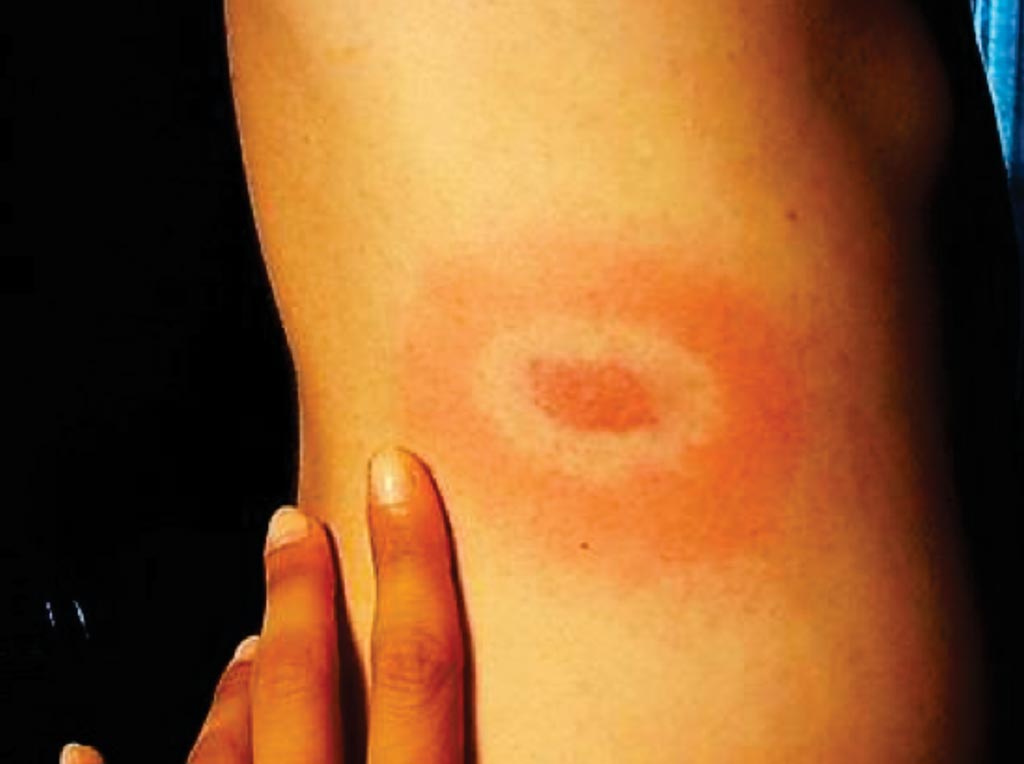New Techniques Can Detect Lyme Disease Earlier
By LabMedica International staff writers
Posted on 23 Oct 2018
Lyme disease, also known as Lyme borreliosis, is an infectious disease caused by Borrelia bacteria, spread by ticks. The most common sign of infection is an expanding area of redness on the skin, known as erythema migrans, that appears at the site of the tick bite about a week after it occurred.Posted on 23 Oct 2018
Lyme disease is the most common tick-borne infection in North America and Europe. There are currently over 300,000 cases of Lyme disease annually in the USA alone, and the disease is increasing and spreading into new regions. New techniques have been developed that can detect an active infection with the Lyme bacteria faster than the three weeks it takes for the current indirect antibody-based tests.

Image: Erythematous rash in the pattern of a “bull’s-eye” from a patient with Lyme disease (Photo courtesy of Hannah Garrison).
A team of scientists led by those at Rutgers New Jersey Medical School (Newark, NJ, USA) developed new techniques that can detect an active infection with the Lyme bacteria faster than the three weeks it takes for the current indirect antibody-based tests that were developed more than two decades ago. Another advantage of the new tests is that a positive result in blood indicates the infection is active and should be treated immediately, allowing quicker treatment to prevent long-term health problems. The techniques detect DNA or protein from the Lyme disease bacteria Borrelia burgdorferi.
Steven Schutzer, MD, a physician-scientist and lead author of the study, said, “These direct tests are needed because you can get Lyme disease more than once, features are often non-diagnostic and the current standard FDA-approved tests cannot distinguish an active, ongoing infection from a past cured one. The new tests that directly detect the Lyme agent's DNA are more exact and are not susceptible to the same false-positive results and uncertainties associated with current FDA-approved indirect tests. It will not be surprising to see direct tests for Lyme disease join the growing list of FDA-approved direct tests for other bacterial, fungal and viral infections that include Staphylococcus, Streptococcus, Candida, influenza, HIV, herpes and hepatitis, among others.” The study was published on October 11, 2018, in the journal Clinical Infectious Diseases.
Related Links:
Rutgers New Jersey Medical School














